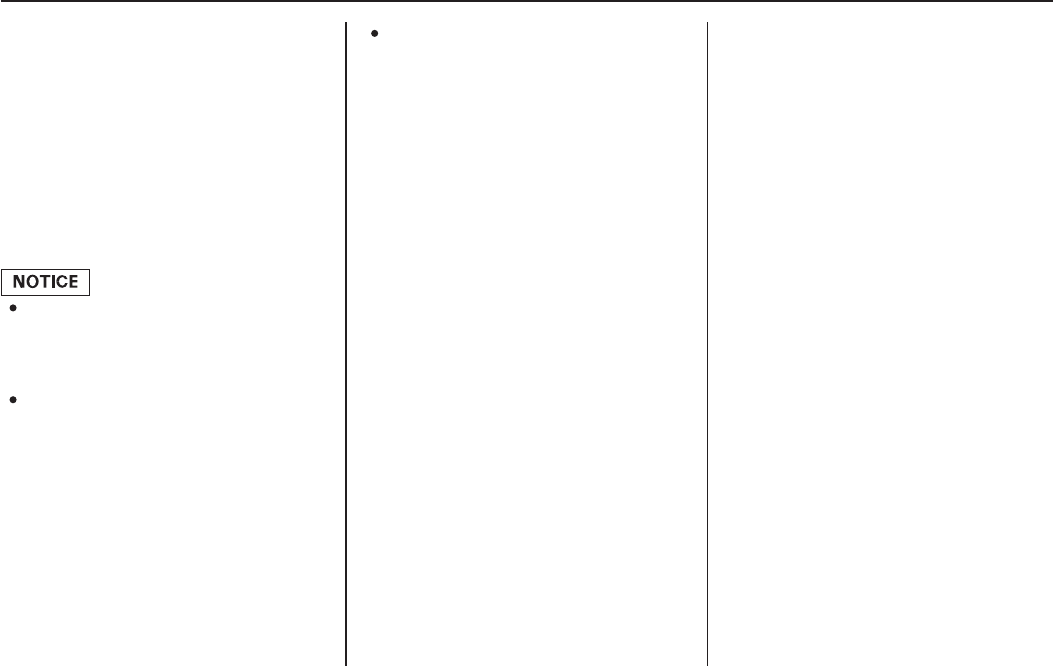Outboard Motor User Manual
Table Of Contents
- COVER
- INTRODUCTION
- CONTENTS
- OUTBOARD MOTOR SAFETY
- CONTROLS AND FEATURES
- CONTROL AND FEATURE ID CODES
- COMPONENT AND CONTROL LOCATIONS
- LHT TYPE (TILLER HANDLE)
- LRT AND XRT TYPES (REMOTE CONTROL)
- REMOTE CONTROL BOX (SIDE-MOUNT CONTROL TYPE) (OPTIONAL EQUIPMENT)
- PORTABLE FUEL TANK (OPTIONAL EQUIPMENT)
- TRIM METER (OPTIONAL EQUIPMENT)
- TACHOMETER (OPTIONAL EQUIPMENT)
- RUDDER METER
- TROLLING CONTROL SWITCH PANEL
- DIGITAL SPEEDOMETER (OPTIONAL EQUIPMENT)
- DIGITAL TACHOMETER (OPTIONAL EQUIPMENT)
- CONTROLS
- BEFORE OPERATION
- OPERATION
- SAFE OPERATING PRECAUTIONS
- BREAK-IN PROCEDURE
- PORTABLE FUEL TANK (OPTIONAL EQUIPMENT)
- FUEL HOSE CONNECTIONS
- FUEL PRIMING
- INFREQUENT OR OCCASIONAL USE
- STARTING THE ENGINE
- EMERGENCY STARTING
- STOPPING THE ENGINE
- GEARSHIFT AND THROTTLE OPERATION
- STEERING
- CRUISING
- TRIM TAB
- SHALLOW WATER OPERATION
- MOORING, BEACHING, LAUNCHING
- SERVICING YOUR OUTBOARD MOTOR
- CLEANING AND FLUSHING
- STORAGE
- TRANSPORTING
- TAKING CARE OF UNEXPECTED PROBLEMS
- TECHNICAL INFORMATION
- CONSUMER INFORMATION
- INDEX

−12V 52Ah/5HR (65Ah/20HR)
(CCA420A)
119
Battery
Minimum Requirements
Emission Control System
Information
WARNING:
Wash your
hands after handling.
TECHNICAL INFORMATION
Source of Emissions
Ignition Timing Control System
Be caref ul to avoid connecting the
battery in reverse polarity, as this
will damage the battery-charging
system in the outboard motor.
Do not disconnect the battery
cables while the engine is running.
Disconnecting the cables while the
engine is running will damage the
outboard motor’s electrical system.
Battery cable extension: Extending
the original battery cable will
cause the battery voltage to drop
due to the increased length of the
cable and number of connections.
This voltage drop may cause the
buzzer to sound momentarily when
engaging the starter motor and
may prevent the engine f rom
starting. If the engine starts and
the buzzer sounds momentarily,
there may be barely suff icient
voltage reaching the engine.
For complete information, refer to
the battery manufacturer’s
instructions.
The combustion process produces
carbon monoxide, oxides of nitrogen,
and hydrocarbons. Control of
hydrocarbons and oxides of nitrogen
is very important because, under
certain conditions, they react to form
photochemical smog when subjected
to sunlight. Carbon monoxide does
not react in the same way, but it is
toxic.
Honda utilizes appropriate air/fuel
ratios and other emissions control
systems to reduce the emissions of
carbon monoxide, oxides of nitrogen,
and hydrocarbons.
The system constantly adjusts the
ignition timing, reducing the amount
of HC, CO, and NOx produced.
Battery posts, terminals,
and related accessories contain lead
and lead compounds.
11/09/14 11:41:56 31ZZ3610_120










